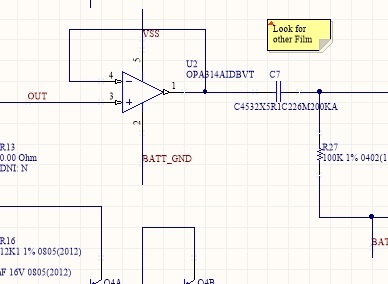Hello,
I'm using the OPA314 to drive a 22 uF coupling cap at the output of my Audio stage. Unfortunately I get a slew type behavior when I hit the input with a super fast large signal transient (1 uS rise) and the output DC does not recover until after second or so. The inputs and outputs are biased at 2.5, unity gain configuration, and the swings are within the allowed range.
Thanks


